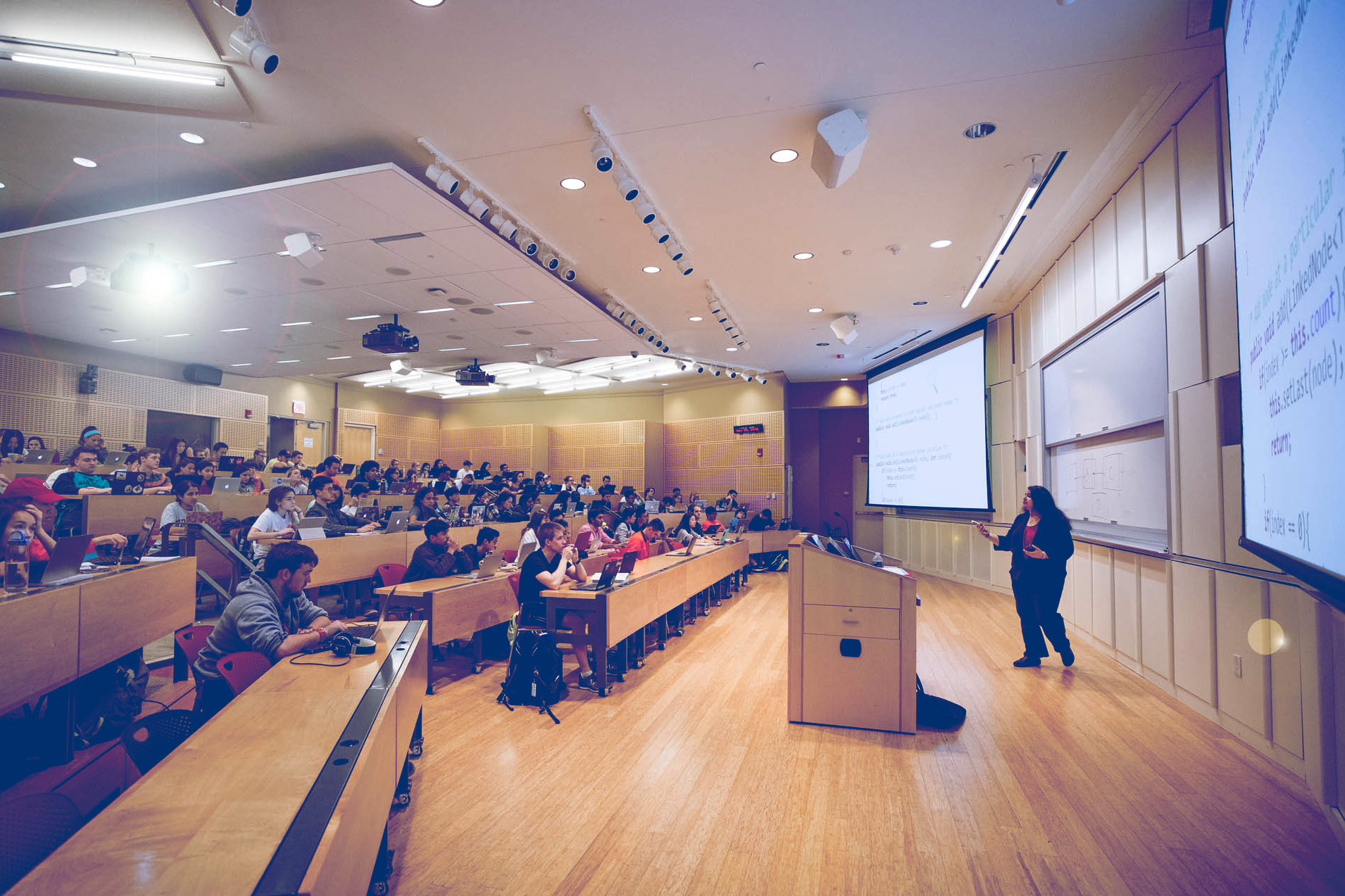University of Virginia faculty members in science, technology, engineering and mathematics, or STEMS, disciplines will soon have the opportunity to enlist more support for using active-learning methods in their large introductory classes – with the help of undergraduate students.
UVA’s Center for Teaching Excellence and the Arts & Sciences Learning Design & Technology group are collaborating on the project, with funding from the Association of American Universities and the Office of the Executive Vice President and Provost. The association announced Tuesday that 12 universities, including UVA, that participate in the AAU’s STEM Education Network were selected to receive two-year grants for their proposals to advance existing efforts to improve undergraduate education in STEM fields.
“The funding will allow us to implement a teaching practice proven by research to be effective in STEM education,” Michael Palmer, director of UVA’s Center for Teaching Excellence, said. “We’ll be able to better support faculty using techniques we know lead to better student learning.

Since 2008, the center’s annual Course Design Institute has helped faculty members design or redesign courses built on student-centered principles and practices that research has shown improve learning outcomes and retention. One such practice is having students work collaboratively in small groups.
How, though, does a professor set up and attend to student teams in a lecture class of 400? Even if he or she does try to have students work this way, it would be difficult to be available to all of them during a class session.
Enter undergraduate learning assistants. This new project will recruit students who have already taken a certain class and train them to help the course instructor by using guided-inquiry approaches during small-group activities, asking questions rather than answering them. The learning assistants are different than tutors or graduate teaching assistants, Palmer said.
This practice has been used at other universities and has been shown to improve student engagement for the class members and the learning assistants, he said. Students in the class show improved learning outcomes and fewer drop out of these classes. For the assistants, it’ll be a paying job that reinforces their own knowledge as they gain satisfaction from helping their peers.
Palmer and Lindsay Wheeler, the Center for Teaching Excellence’s assistant director of STEM education initiatives, will work with Judith Giering, director of Learning Design & Technology, and Gail Hunger, an instructional designer with that group, to develop the program that will get underway in the fall semester. They plan to assemble an initial group of six faculty members and 18 students this spring.
The program will be open to all STEM instructors, but preference will be given to faculty who teach “gateway” courses that typically have large enrollments, and who are using evidence-based methods or have been through the center’s Course Design Institute. Depending on what subjects are represented in the faculty group, the students who’ve already taken those courses will be recruited and attend an intensive training session in August.
During the fall semester, the learning assistants will attend each class to help support learning activities as well as a weekly meeting to debrief and plan with the professor. To continue to develop and practice skills, the student assistants also will attend a weekly meeting led by staffers from the Center for Teaching Excellence and the Arts & Sciences Learning Design & Technology group. The faculty members will form their own learning community and also meet regularly with program staff.
Several STEM departments have already expressed interest in having experienced undergrads help facilitate student learning in their large-enrollment courses. Some of them – including the departments of Biology, Chemistry and Applied Math – already employ undergraduates in various instructional capacities, such as assisting in inquiry-based labs.
The Learning Design & Technology group has led many STEM initiatives in the College and Graduate School of Arts & Sciences, especially in developing technology-enhanced activities. Its staff members often participate as facilitators in the center’s Course Design Institute.
The AAU mini-grants are made possible by a five-year, $1 million grant from the Northrop Grumman Foundation, which supports diverse and sustainable national programs to enhance the STEM education experience for students and provide STEM teachers with the training and tools they need to be successful in the classroom.
“AAU remains committed to improving the effectiveness of undergraduate STEM teaching and learning at research universities,” AAU President Mary Sue Coleman said. “We are excited to support innovative concepts to scale education reforms at our member campuses.”
Media Contact
Article Information
February 13, 2017
/content/new-uva-program-will-support-stem-instructors-large-classes

